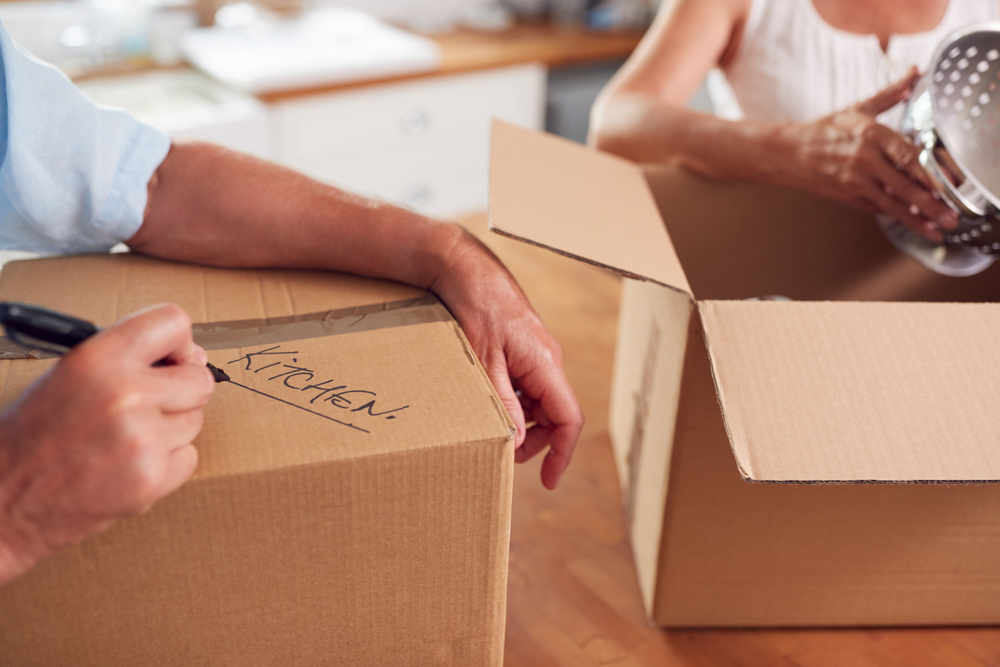Moving to a retirement home is a significant lifetime milestone, especially after you’ve spent your entire life living independently in a home of your own. It’s a transition that can be full of mixed emotions—excitement for the new chapter of community and support, alongside some apprehension about the changes ahead. This guide and checklist provide you and your loved ones with invaluable insights and practical tips for moving into senior living, making the transition as seamless as possible.

Understanding the Benefits of a Retirement Home
Whether you or your loved one is moving into assisted living or requires the more hands-on approach offered by memory or long-term care, this life transition provides many benefits.
Assisted living communities, for example, are designed to provide the perfect balance between independence and support. Residents enjoy the freedom to lead fulfilling lives while having access to assistance with daily activities, including:
- Meal preparation
- Medication management
- Housekeeping
Beyond practical assistance, assisted living provides a vibrant social environment. Residents are surrounded by peers, creating opportunities for lasting friendships to bond over shared activities.
For those who need advanced support during their transition into senior living, benefits may include:
- Assistance and specialized care for memory-related conditions.
- Comprehensive, round-the-clock support for those with significant medical concerns.
Managing the Moving Process
Deciding what items you’d like to take to your new home is a bittersweet experience. Your current home is likely filled with memories. It is rewarding to look at each item you have and relive the memories and good times associated with it. But it can also be stressful trying to make decisions about cherished belongings.
Ask if the residence has a floor plan of your suite, preferably one with dimensions. Then, measure your own furniture, possibly even making paper cutouts to scale so you can play with the position of the furniture and ensure that it will fit in your suite. Visit the model and/or guest suites in the residence for ideas; perhaps take some photos of your suite so you can better visualize when planning. If it is currently vacant, visit your new suite with a measuring tape and camera. This will help you decide on draperies and artwork placement.
Look into organizations that coordinate entire moves. These specialists will come into your home, pack your belongings under your supervision and set up your new suite—right down to unpacking your suitcase so that all you do is walk in the door and enjoy your new surroundings. These organizations will also dispose of any items you want to give to charity and coordinate the transfer of more valuable pieces to an auctioneer for resale. They will arrange for your change of address, insurance and more.
While you cannot fit a house full of furniture into a suite, you can still bring some pieces that are most important to you. Think about which pieces are functional and used frequently, such as your favourite armchair, dresser, etc.
Small furniture tends to work best since it allows you to bring more without appearing too cluttered. Avoid furniture with sharp edges and glass tops, as these can be hazardous, and ensure furniture placement allows for free movement within your suite. Items that may give you the most pleasure, likely sentimental things such as photos, artwork and knickknacks, can easily be accommodated.
Once you have decided what you would like to take with you, it’s time to decide how to dispose of the remaining items. Some ideas include:
- Have family members and special friends see if there is anything they would like to keep. It allows these people to share in your treasured memories, and it also gives you the opportunity to “visit” your special pieces.
- Hold a garage or moving sale. Be sure not to sell or give away too much. It’s easier (and less costly) to take more than you need than replacing items you gave away.
- Donate items to a special charity such as the Salvation Army, Goodwill or a church (or other place of worship) bazaar. Many of these organizations will pick up items.
- Have auction specialists come to your home and review your furniture. The staff will advise you as to which pieces are appropriate. They will pick up the furniture and arrange for its resale.
- If you are moving into a residence that provides furnishings, you still have the opportunity to bring your own artwork, decorative items and possibly even some of your own furniture. Discuss this with the staff.
Finally, try not to make snap decisions. If you are unsure about a particular piece, have your family store it until you decide.
Moving

Packing, organizing transportation and then unpacking can be an exhausting and highly emotional experience for everyone involved.
There are a variety of organizations you can refer to for advice to help make the move easier—retirement communities, real estate agencies, friends, and professional movers.
Professional movers:
- Professional movers are fast and efficient, take great care with treasures, and can also get insurance against any damages. Ask the residence staff or your friends for recommendations on quality movers. You can also contact the Better Business Bureau to find out if the company you are considering has had any complaints filed against it.
- Ask the movers if they offer discounts for seniors or provide free moving accessories such as boxes and wrapping.
- Try to get at least two written estimates before choosing a moving company. Be sure that the estimate includes the clause, “Not to exceed $.$$.” This will protect you from additional charges unless, of course, you have added additional items or if the move takes longer than anticipated because of disorganization on your part.
- Try not to pack valuables and family heirlooms. Moving companies don’t insure contents if the box isn’t damaged, but the contents are. Carry jewelry and small valuables with you, or keep them in your bank’s safety deposit box until you are settled in your new home.
- If you and your family will be doing the unpacking, keep track of what’s inside the boxes by writing on the outside of the box or keeping a list of what’s in each box with a corresponding number on the box. Ask movers to do the same, or at least indicate which room the box is from.
- It’s also wise to photograph your most valuable possessions as proof of their condition before the move should they be damaged/lost in the process.
Do-it-yourself moves:
- To pack effectively, gather the essentials: sturdy boxes, tape, bubble wrap, and labels. It’s a good idea to prioritize packing room by room, starting with non-essential items. Keeping everything organized by room will help you unpack quicker, knowing where to place belongings.
- For fragile items, wrap them securely and cushion them with packing materials, like bubble wrap or cloth. Keep these separate for easy access when you arrive. Ensure you label them “fragile” or “delicate” so they can be handled carefully.
Whether you’re handling your own move or hiring professionals, try not to move on the 1st or 31st of the month. These are the busiest moving days, and many movers will be booked or may be rushed to finish more than one move. Or, if you’re hiring a truck for a DIY move, you may find that they get booked very quickly.
If you’re packing yourself, you can pack over several days or even weeks. If you’re using movers, have the movers pack one day, then move the next. If possible, stay with family until everything is in place.
Be sure the residence’s staff knows when to expect you—and your movers if you’re using them. They can then be sure the elevator is reserved for your move and does not conflict with any busy times (such as lunch or dinner). Ask if there is a moving dolly and luggage cart available.
Moving Day
Moving day has finally arrived, and before the sun sets, you’ll be completely unpacked and in your new suite. Here are a few thoughts on how to make the day stress-free:
- Let others do the work! If you have movers, let them unpack under your supervision or have family do the legwork while you provide direction. Better yet, take the day off. Go shopping or visit a friend while your family or movers set up your new residence. Oftentimes, it’s easier emotionally if you don’t have to see your home of twenty or thirty years slowly empty.
- Don’t exhaust yourself. You will have plenty of time to complete the “final touches” over the coming days. Your health and well-being are more important.
- Ask the residence if a maintenance staff member might be available for some items like picture hanging. A half-hour of help from the maintenance person could go a long way in getting your suite set up just as you’d like it.
- Make reservations with the residence for your family to join you for your first meal in the dining room. It’s a nice way to unwind a bit and celebrate a job well done.
- Ask the staff to bring a tray to your room if you’re too tired to go to the dining room.
Looking for Your New Residence?
Still at the beginning stages of transitioning into a retirement residence? At The Vineyards Residence, we have comprehensive assisted, memory, and long-term living care services. We strive to ensure everyone, no matter their care levels, lives a fulfilling and comfortable life. Contact us today.

